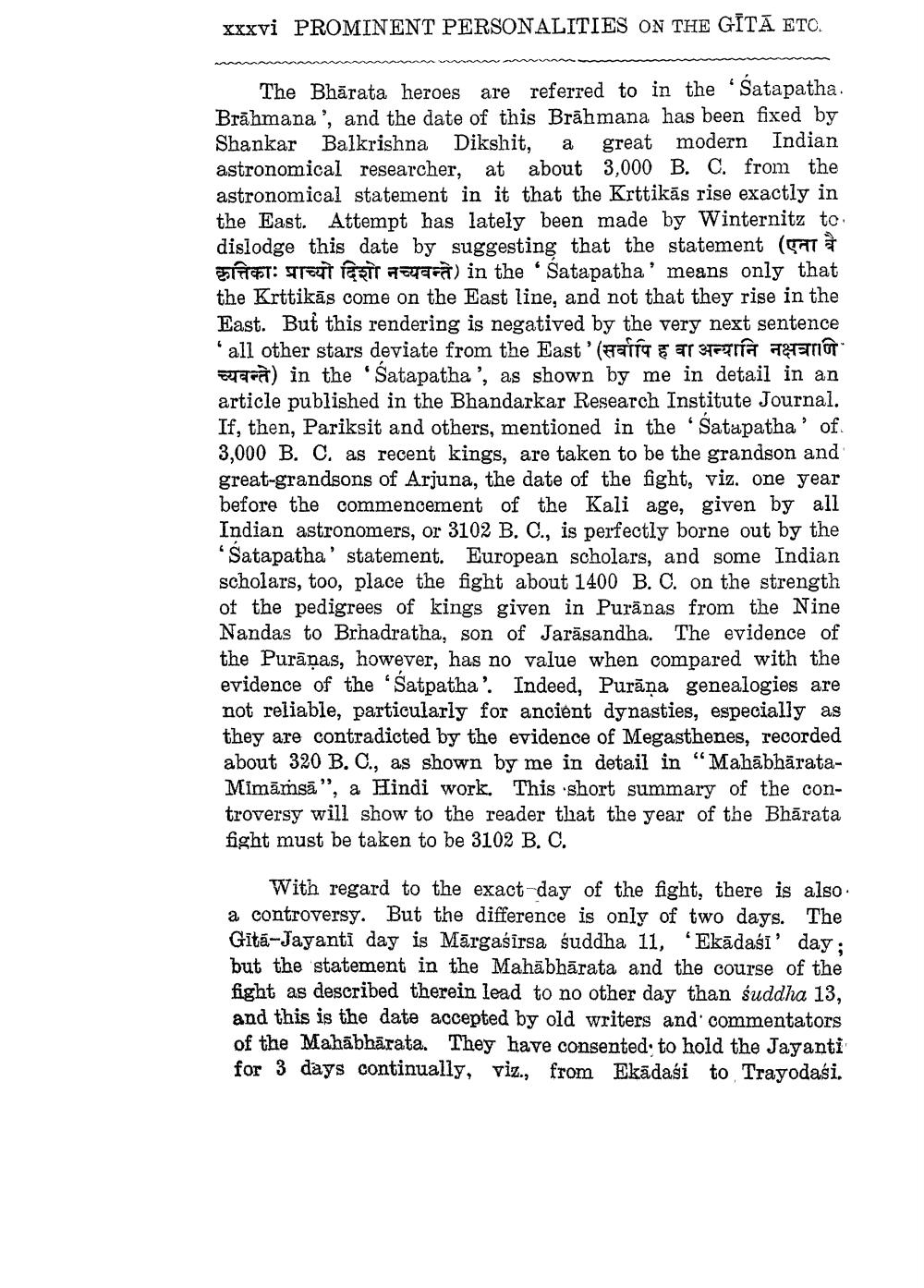________________
xxxvi PROMINENT PERSONALITIES ON THE GĪTĀ ETC.
The Bhārata heroes are referred to in the 'Satapatha. Brāhmana', and the date of this Brāhmana has been fixed by Shankar Balkrishna Dikshit, a great modern Indian astronomical researcher, at about 3,000 B. C. from the astronomical statement in it that the Krttikās rise exactly in the East. Attempt has lately been made by Winternitz te. dislodge this date by suggesting that the statement (SAT
T: TTET ETT Feuera) in the Satapatha' means only that the Krttikās come on the East line, and not that they rise in the East. But this rendering is negatived by the very next sentence "all other stars deviate from the East' (Falta TESTETIA APETIT
rag) in the Satapatha', as shown by me in detail in an article published in the Bhandarkar Research Institute Journal. If, then, Pariksit and others, mentioned in the 'Satapatha' of 3,000 B. C. as recent kings, are taken to be the grandson and great-grandsons of Arjuna, the date of the fight, viz. one year before the commencement of the Kali age, given by all Indian astronomers, or 3102 B, C., is perfectly borne out by the 'Satapatha' statement. European scholars, and some Indian scholars, too, place the fight about 1400 B.C. on the strength of the pedigrees of kings given in Purānas from the Nine Nandas to Brhadratha, son of Jarāsandha. The evidence of the Purāņas, however, has no value when compared with the evidence of the "Satpatha'. Indeed, Purāna genealogies are not reliable, particularly for ancient dynasties, especially as they are contradicted by the evidence of Megasthenes, recorded about 320 B. C., as shown by me in detail in "MahābhārataMimāmsā", a Hindi work. This short summary of the controversy will show to the reader that the year of the Bhārata fight must be taken to be 3102 B. C.
With regard to the exact day of the fight, there is also a controversy. But the difference is only of two days. The Gitá-Jayanti day is Mārgasirsa suddha 11, Ekādasi' day : but the statement in the Mahābhārata and the course of the fight as described therein lead to no other day than śuddha 13, and this is the date accepted by old writers and commentators of the Mahābhārata. They have consented to hold the Jayanti for 3 days continually, viz., from Ekādasi to Trayodasi.




